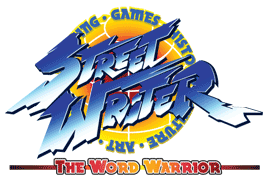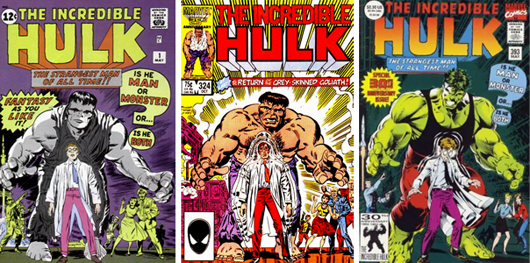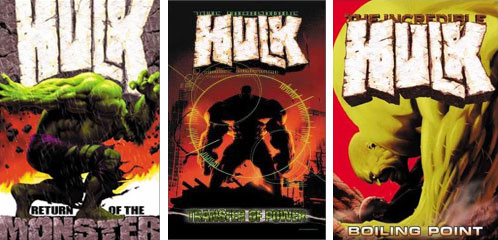Below is a series that I originally ran on 1UP in 2006. In it I proposed an original video game based on the Incredible Hulk. I called it "The Big Game Idea." Over a few weeks I described the graphics, game play, visuals, and plot from beginning to end, including bonus features. I made a few minor edits, but it is more or less exactly the same as it was almost 20 years ago. I hope you enjoy it.

Heya peeps, saw the Tony Hawk animated movie yesterday. It was fun but really for die-hard skate fans. The CGI was good and the art direction superb but a lot of the jokes would be lost on casual or non-skate fans. The story is lifted from Scooby-Doo, involving a kidnapping and plot to steal Tony Hawk's tour while at the fictional Lincolnville. We actually end up feeling sorry for the evil Grimley and his defunct circus, unlike those meddling kids and their good-for-nothing dog. The skating was great and easily the hook of the movie, I think there should be a series done with the likeable characters. As far as animated adventures go this is one of the better ones not produced by Disney-direct-to-DVD. If you are a skate fan go check it out, otherwise wait for the movie to premier on Cartoon Network in November.

So now let's switch gears, literally, this heart of this blog and the blogs for the next few days (weeks?) will be on this game idea that's been bubbling in my head since June of this year.

When I spawn an idea I write down notes in my trusty notepad.
This is just one of many notepads that I've filled with notes from school or work. As Mr_Glass had predicted this game idea revolves around the Incredible Hulk. A good chunk of the fleshing out of the game took several days and many more pages than you see here.

These notes don't just have the basic idea but some innovations as well. I wouldn't want to just make another comic book game, I'm thinking big picture. What if I were given the chance to design and direct an epic comic book game that spanned the course of a trilogy. Where would it begin and what would make it different than any other game out there?
Why the Hulk?
I think there is a lot of untapped potential for the character. His
powers are, for lack of a better word, incredible! I set about designing a game that truly shows how much more epic of a character the Hulk is than Kratos from God of War.
The tormented soul of Doctor Banner, the lost love of Betty Ross Banner, the fugitive Hulk... There are so many places we could take this character and so many challenges that he could stand against. No other character could withstand as much punishment as the Hulk and keep coming back for more. This game serves as both a primer to the Hulk and the Marvel Universe as well as demonstrating that comic book IP's can translate into a great game if done right.
Let's start by figuring out how we would approach the graphics engine.
The Graphics: Comic-Shading (something I just made up)
Comic shading is a combination of cel-shading and comic book illustration. The final effect is different from the cartoon look of the original Hulk game or the "3D Comic Inking Technology" in Ultimate Spider-Man. This is done by actually having a comic book illustrator, inker and painter create textures for each character by hand. The final models look more like comic book characters come-to-life than in any other game.

We have to use our imagination here, my crappy illustrator sketches are just a rough example of what I envision. Imagine that a great comic book artist was doing the concept art and then wrap that art over a polygon model.

The Hulk model for the game would actually have multiple layers created in a comic-shading format. There is a layer of "muscle" underneath the "skin" and a "skeleton" underneath all the layers. The reason for creating this is to highlight the "healing factor."
During the game powerful blasts of energy from a super-powered opponent (in the Marvel universe both the good guys and bad guys hate the Hulk) or radiation from a military weapon may fry the layers of skin and muscle off of the Hulk. The character will still be able to move and fight even from a near-skeletal state. The skeleton "skin" has tendons, bits of muscle and we can actually see intestines, the heart beating and lungs moving. Rather quickly the Hulk will regenerate from the injuries right before our eyes.

I believe multiple skins or layers on one model would be unique to games. We have seen damage to armor in FPS or bruises and tearing of clothes in the Tony Hawk games. But to actually see the Hulk survive and then recover from injuries that would prove fatal to any other character (including Superman, Kratos or Wolverine) would be a videogame first.

EDIT 2025: Interestingly enough a few years after I posted my game idea series online there would actually be a game that used what I was proposing. The 2010 game Splatterhouse, a remake of the classic arcade game, featured regeneration on the main character.

If I had my druthers I'd have fan favorite
Dale Keown as the character designer and lead comic shader of my Hulk game. His history with the Incredible Hulk is extensive plus he has a library of amazing work with other characters as well. This artistic vision would be paramount to bringing back classic villains or reimagining existing opponents.

Tomorrow I'll talk a little bit about the control and fighting engine as well as unique environmental details. Let's hear your feedback as these ideas come up.
Tell me in the comments section. As always if you enjoyed this blog, and would like to sponsor me
please visit my Patreon page and consider donating each month, even as little as $1 would help make better blogs and even podcasts!




































